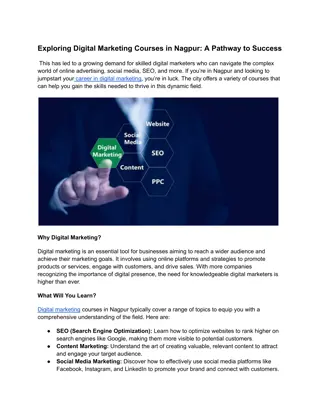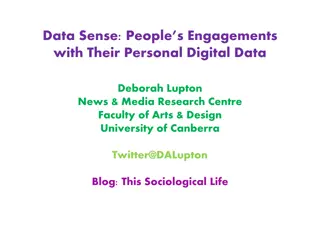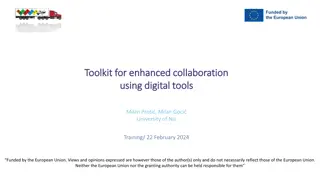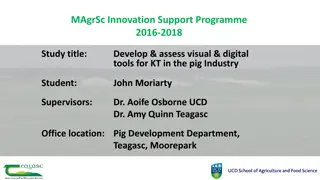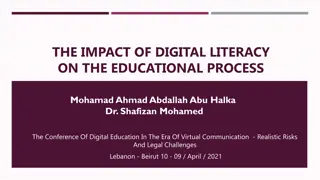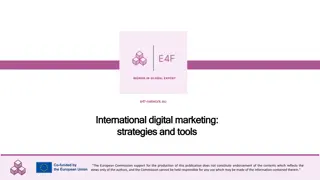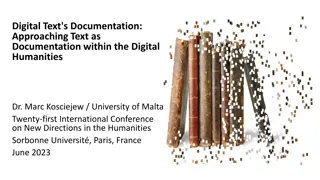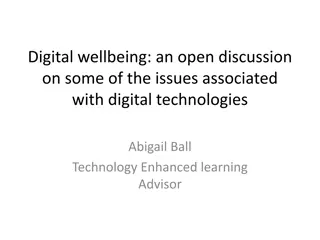Exploring Historical Analysis with Digital Tools
Delve into the world of historical analysis using digital methods like digitization, metadata, OCR, and balancing challenges. Discover how tools like Antconc can aid in machine-driven inquiries, statistical analysis, and more to extract valuable insights from historical sources.
Download Presentation

Please find below an Image/Link to download the presentation.
The content on the website is provided AS IS for your information and personal use only. It may not be sold, licensed, or shared on other websites without obtaining consent from the author. Download presentation by click this link. If you encounter any issues during the download, it is possible that the publisher has removed the file from their server.
E N D
Presentation Transcript
Analyzing historical sources with computers
Do you have digitized historical sources? Do you have a historical question? Do you have an appropriate digital approach/met hodology? Can it be answered using computers? Are they machine readable? Do you know how to analyse and explain the results?
Creating or finding Corpora We know the historical sources we wish to use, but there are challenges Digitization Metadata OCR Balance
Our body of texts (corpus) bit.ly/HWSdl More info
vocabulary corpus = body of texts concordance = extracted lines from the texts that match a specific word query collocates = words that occur near one another within a specified range of the word Clusters = words that appear adjacent to one another within a specific range of the word
Antconc Mechanics: Loading Files [by directory or by individual file] File formats [ txt, XML, HTM, HTML Change in global settings tab Failsafe Check corpus files window far left Antconc Mechanics exporting results
Things Antconc can do bit.ly/AntHF Machine driven inquiries Word list (frequency) Keyword list (keyness) Ngrams (multi word expressions) User driven inquiries Clusters Collocates Concordance search
More than counting To compare things we have to normalize the raw numbers into a common base (per million words usually) [normalized frequency= Frequency of word(1,000,000)/total words in text] statistical measures to determine whether observed differences are statistically significant difference between two things (keyness) measured by Log Likelihood (LL) 95th percentile; 5% level; p < 0.05; critical value = 3.84 99th percentile; 1% level; p < 0.01; critical value = 6.63 99.9th percentile; 0.1% level; p < 0.001; critical value = 10.83 99.99th percentile; 0.01% level; p < 0.0001; critical value = 15.13 Probability two things occurring together (clusters and collocates) measured by mutual information score (MI) Statistically significant MI > 3.0 for frequency > 3
What are some historical questions we could answer using these texts?
"Under this name she is fitly described": A Digital History of Gender in the History of Woman Suffrage the word women appears almost twice as frequently as woman in the History of Woman Suffrage (figure 2a), which is the reverse of contemporaneous texts found in the Corpus of Historical American English Linguistically the demand for rights narrowed to a specific universal demand for woman suffrage In the immediate post Civil War era. In the early 20th century woman s rights begin to take secondary place to organizations within the coalition fighting for suffrage Woman s Christian [temperance union] Woman s Journal) Women specified groups, such as married women, white or Southern women. When compared to words that preceded men, the racialized context of the fight for woman suffrage becomes even more apparent (black, colored). Other adjectives hint at ways women might obtain rights, by being loyal or educated women. Men are described in terms that denote character, such as good or best, as well as social status, such as prominent and leading.
Female versus male authors Female authors refused to engage in what historians have termed separate spheres instead writing about women s position. Male authors, on the other hand, used spheres. Conclusion? Female suffragists had long tired of debating their sphere, while their male advocates continued to battle this anti-suffrage rhetoric. Female authors were more likely to use words that reflect gender, through gendered terms of address (Mrs., Miss, Mr.), gendered pronouns (her, his) and references to kinship (mother, father, wife). Male authors were more likely to use words that reflect the distinctions of sex such as woman, man, male, female, and sex itself. Gendered pronoun possession her hints at a gendered rhetoric, with each sex taking a specific tactic in the fight against the opposition, but reveals the limitations of History of Woman Suffrage as a source for exploring gender. The exclusion by the editors of the History of Woman Suffrage of more radical activists means that married women's property rights is the most prominent gendered rights discourse present in the volumes outside of suffrage itself. There simply are not enough instances of other clusters to draw more than tentative conclusion about gendered rhetoric.
Compared to contemporaneous black suffragists black suffragists wrote about peoplemen man more often than woman or women While women appears relatively infrequently, black suffragists were very likely to use her which offers not only a way to get at gender in their texts, but also a point of comparison with female authors in the HWS Of the ten most frequent nouns that followed her reveals only a single point of overlap her husband female possession by black suffragists reveals an embodied discourse, her heart, her eyes, her voice, her hand even where there is overlap in these bodily references, their uses diverge. In the HWS, for example her hand is performative. It implies the power to do something as well as denoting affection. Black suffragists used hand to denote affection, as well as its oppositve. In place of the empowered use of hands, which is only weakly present, black suffragists used hand to indicate grasping for something and as a means of connecting with another person
AntConc Resources Anctonc download Page video tutorials Heather Froehlich's Programming Historian Tutorial on Antconc







